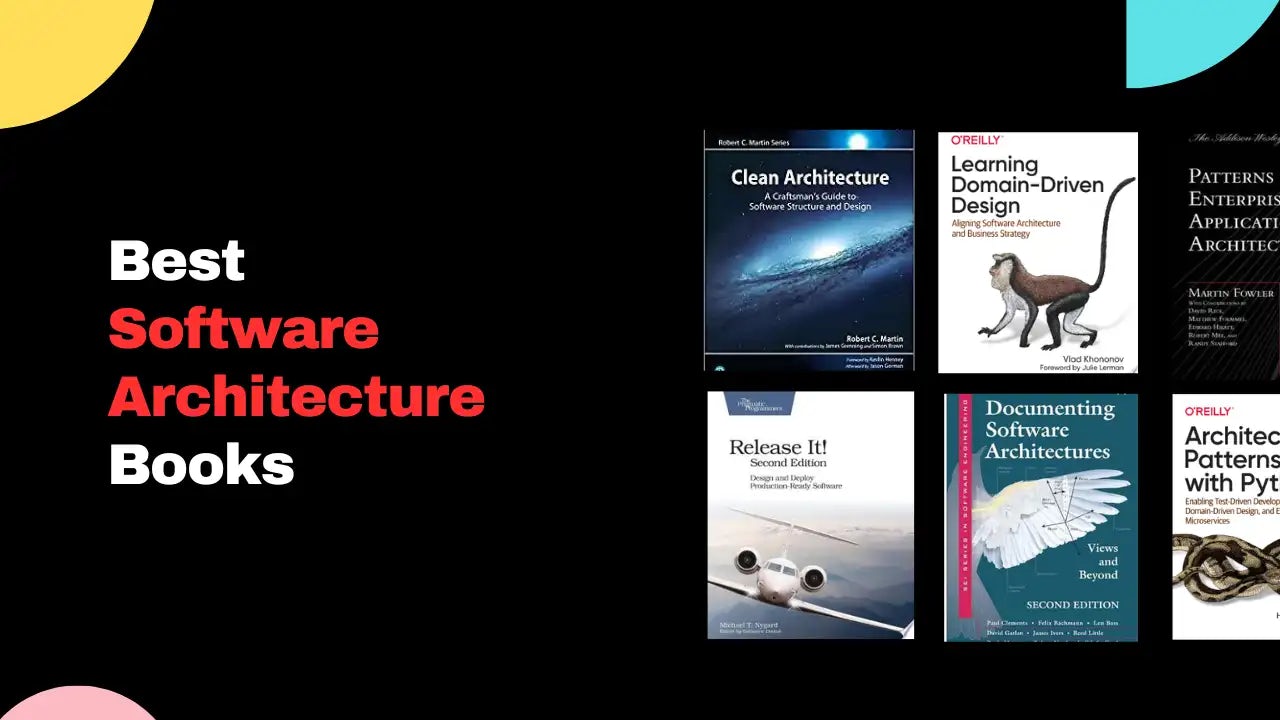13 Best Software Architecture Books in 2023
Most popular
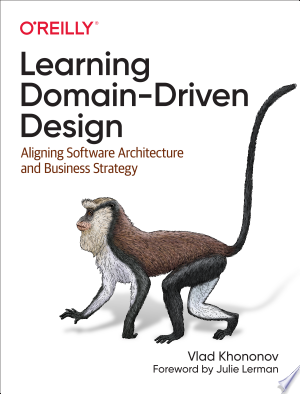
- Use core patterns, principles and practices for analyzing business domains
- Understand how to align software design with business needs
- Examine the relationship between DDD and other methodologies
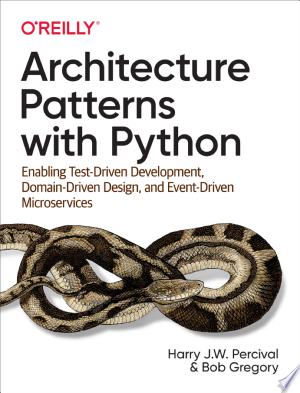
- Understand the importance of software design patterns to manage application complexity
- Write idiomatic Python code for each pattern
- Master dependency inversion and ports/adapters (hexagonal/clean architecture)
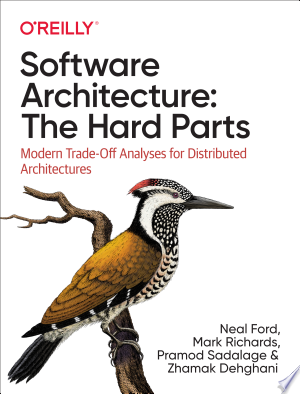
- Analyze trade-offs and effectively document decisions
- Determine service granularity
- Decouple contracts between services
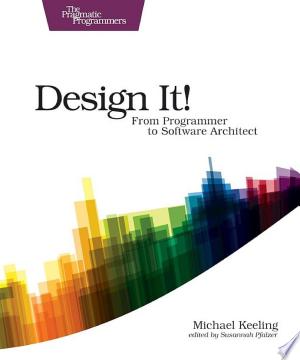
- Become a successful software architect
- Understand core concepts of software architecture and gain confidence in working on projects big or small
- Identify stakeholders and understand their needs, dig for architecturally significant requirements, write quality attribute scenarios and make confident decisions
Best Software Architecture Books
1. Learning Domain-Driven Design

Learning Domain-Driven Design offers a set of principles, patterns and practices for understanding business domains. It shows you how to connect software domain design to its business needs.
Author Vlad Khononov helps developers analyze a company's competitive strategies as well as build shared understanding of the business domains they are working on. Additionally, readers will learn how to decompose systems into bounded contexts and coordinate teams' work with DDD implementation in brownfield projects. This book provides essential guidance for effectively designing robust software solutions that meet business requirements.
So, if you're looking for a comprehensive guide to mastering DDD architecture and its practical applications, this book is for you. Let's get started!
Authors: Vlad Khononov
Get the bookTopics covered
You will learn how to:
- Use core patterns, principles and practices for analyzing business domains
- Understand how to align software design with business needs
- Examine the relationship between DDD and other methodologies
- Build a shared understanding of different business domains
- Decompose a system into bounded contexts
- Coordinate the work of multiple teams
- Gradually introduce DDD to brownfield projects
2. Architecture Patterns with Python : Enabling Test-Driven Development, Domain-Driven Design, and Event-Driven Microservices

Architecture Patterns with Python provides a comprehensive guide to the principles of modern software design using Python.
Written by Harry Percival and Bob Gregory, the book includes easy-to-follow, concrete examples of how to apply high-level design patterns. You'll explore patterns such as hexagonal/clean architecture, event-driven architecture and DDD.
Python is rapidly becoming an essential language for software development. As projects become more complex, their architectures must become more sophisticated. This Python book is a must if you are interested in software architecture.
Authors: Harry Percival, Bob Gregory
Get the bookTopics covered
You will learn how to:
- Understand the importance of software design patterns to manage application complexity
- Write idiomatic Python code for each pattern
- Master dependency inversion and ports/adapters (hexagonal/clean architecture)
- Become familiar with Domain Driven Design (Entities, Value Objects, Aggregates)
- Utilize Repository and Unit of Work patterns for persistent storage
- Create events, commands, and a message bus using Python
- Implement Command Query Responsibility Segregation (CQRS)
- Develop Event Driven Architecture and reactive microservices in an efficient manner
3. Software Architecture: The Hard Parts

Software Architecture: The Hard Parts is a comprehensive guide for distributed architectures.
Authored by industry veterans and practicing consultants, the book shares useful strategies on how to think critically about architecture trade-offs.
With real-life examples from their fictional tech team, Sysops Squad, you will learn how to manage services granularity, contracts and transactions.
If you're looking to make the best architectural decisions for your organization, Software Architecture: The Hard Parts is the perfect guide.
Authors: Neal Ford, Mark Richards, Pramod Sadalage, Zhamak Dehghani
Get the bookTopics covered
You will learn how to:
- Analyze trade-offs and effectively document decisions
- Determine service granularity
- Decouple contracts between services
- Handle data in a highly distributed architecture
- Manage workflow and transactions when breaking apart applications
- Optimize operational characteristics like scalability, elasticity, and performance
4. Design It! : From Programmer to Software Architect

Design It! is an essential guide for aspiring software architects.
The book is a collection of actionable techniques. It provides comprehensive insight into the process of software architecture design. From stakeholder engagement to technology selection and evaluation.
You will learn how to facilitate collaborative design workshops, ask the right questions, identify needs and requirements, write effective quality attribute scenarios and make confident decisions.
This book will help you develop leadership skills as well as confidence in architectural knowledge.
Authors: Michael Keeling
Get the bookTopics covered
You will learn how to:
- Become a successful software architect
- Understand core concepts of software architecture and gain confidence in working on projects big or small
- Identify stakeholders and understand their needs, dig for architecturally significant requirements, write quality attribute scenarios and make confident decisions
- Choose technologies based on their architectural impact
- Facilitate architecture design workshops and evaluate architectures using lightweight methods
- Write lean architecture descriptions people love to read
- Implement the designed architecture and grow team's architectural knowledge
- Talk about software architecture with stakeholders using whiteboards, documents,and code.
- Apply architecture focused design methods in everyday practice
5. Clean Architecture : A Craftsman's Guide to Software Structure and Design
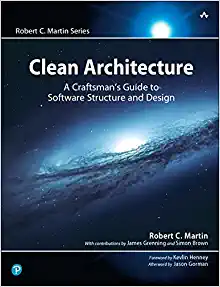
Clean Architecture, by Robert C. Martin (“Uncle Bob”), is a must-have guide for software architects and developers looking to improve productivity and efficiency.
Uncle Bob provides clear recommendations on design choices that can make or break your project's success. The book is packed with essential principles for managing function, component separation, and data management.
Learn how programming paradigms impose discipline in development teams while helping you avoid common mistakes and flaws in designs and architectures.
Authors: Robert C. Martin
Get the bookTopics covered
You will learn how to:
- Learn the essential software design principles for addressing function, component separation, and data management
- Understand programming paradigms and how they impose discipline on developers
- Master best practices for creating optimal high-level structures for web, database, thick-client, console and embedded applications
- Gain insight into defining appropriate boundaries and layers in a software architecture
- Acquire a comprehensive understanding of why designs and architectures go wrong
- Develop strategies to prevent (or fix) these errors
6. Patterns of Enterprise Application Architecture : Pattern Enterpr Applica Arch
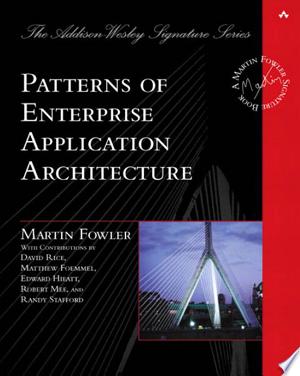
Patterns of Enterprise Application Architecture is packed with advice for developers on how to build powerful applications using object-oriented languages.
Written by renowned designer Martin Fowler, this book contains an indispensable handbook of over forty recurring architectural solutions that are applicable no matter which enterprise application platform you use.
It also includes a tutorial on developing enterprise applications and detailed code examples in both Java and C#.
This book is a must-have resource for any enterprise application developer.
Authors: Martin Fowler
Get the bookTopics covered
You will learn how to:
- Understand the architectural lessons that experienced object developers have learned
- Gain an understanding of over forty recurring solutions into patterns
- Acquire knowledge to make important architectural decisions when building an enterprise application
- Develop skills in organizing business logic with Model View Controller (MVC) approaches
- Understand how to handle concurrency for data that spans multiple transactions
- Design distributed object interfaces.
7. Solutions Architect's Handbook : Kick-start your solutions architect career by learning architecture design principles and strategies
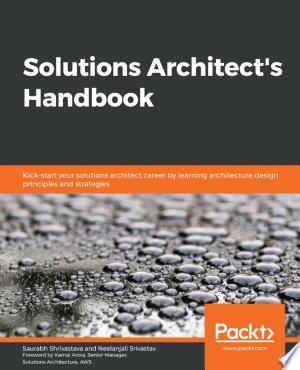
The Solutions Architect's Handbook is an essential resource for IT professionals seeking to build their skills and advance in the industry.
This book covers a range of topics, from fundamentals and design patterns to the best strategies for building secure and reliable architectures in AWS cloud.
You'll learn how to create solutions that transform business requirements into technical architecture. There's even a chapter on how to modernize legacy applications with microservices and event-driven patterns.
This handbook also teaches you everything you need to know about security automation, DevOps, cost optimization, operational excellence, machine learning, big data processing, IoT and more.
Authors: Saurabh Shrivastava, Neelanjali Srivastav
Get the bookTopics covered
You will learn how to:
- Understand the fundamentals of solution architecture design principles and attributes
- Migrate applications to the cloud and modernize them using microservice, event-driven, cache-based, and serverless patterns
- Develop an understanding of the main pillars of architecture design such as performance, scalability, cost optimization, security, operational excellence, and DevOps
- Enhance your knowledge about big data processing techniques for machine learning models and IoT solutions
- Get acquainted with the documentation of architecture designs
- Acquire soft skills that are necessary to become a better solutions architect
8. Building Evolutionary Architectures : Support Constant Change
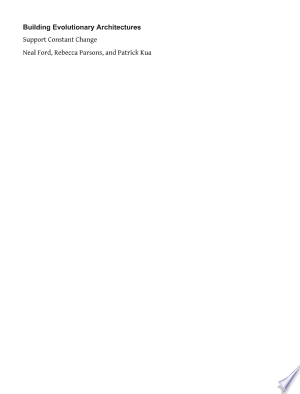
This book is the definitive guide for creating evolutionary architectures that ensure your software remains up-to-date and responsive to changes. It ties together cutting-edge engineering practices with a new approach to architecture, allowing you to protect key architectural characteristics as the system evolves over time. Filled with practical advice, this guide will give you an edge when it comes to developing software in today's ever-changing landscape.
You'll learn how to design applications that can handle change gracefully, and discover the importance of embracing incremental change. You'll also gain valuable insight into how to maintain architectural integrity over time, so you can create resilient architectures that are more flexible, efficient, and maintainable. Learn best practices for creating evolutionary architectures that will ensure your software remains up-to-date and responsive in today's fast-paced world. Read this book now to unlock the secrets of building future-proof systems!
This guide is perfect for developers seeking a better understanding of modern architecture development techniques. It covers everything from core principles around architecture evolution to tips for identifying important architectural characteristics. With its step-by-step approach and practical
Authors: Neal Ford, Rebecca Parsons, Patrick Kua
Get the bookTopics covered
You will learn how to:
- Rethink architecture in a changing development landscape
- Understand the foundational engineering practices for software development
- Gain insights into protecting important architectural characteristics as they evolve
- Discover new ways of considering architecture and time
- Explore tools, frameworks, techniques and paradigms available to support this approach If you're a software developer, this guide is just what you need to stay ahead of the curve as your development landscape changes. With this practical approach, you'll be able to think more strategically and gain an advantage in your work. So grab your copy today and get ready to revolutionize your understanding of architecture and time.
9. Documenting Software Architectures : Views and Beyond

Documenting Software Architectures, is the perfect guide to help you successfully communciate software system's architecture.
This comprehensive book provides detailed guidance on how to document a modern software system in a common and understandable form.
The book explores strategies for documenting architectures in different styles such as service-oriented architectures and multi-tier architectures. It also includes templates for creating cohesive packages of information.
Authors: Paul Clements, Felix Bachmann, Len Bass, David Garlan, James Ivers, Reed Little, Paulo Merson, Robert Nord, Judith Stafford
Get the bookTopics covered
You will learn how to:
- Identify and capture essential information for software architecture documents.
- Understand the importance of describing architectural views, styles, interfaces, and behaviors.
- Gain insight into documenting for Agile environments.
- Discover how to use templates to generate a coherent package of documentation.
- Acquire knowledge about three common architecture documentation languages: UML, AADL, and SySML.
- Benefit from a comprehensive example and extended reference guides.
10. Fundamentals of Software Architecture : An Engineering Approach
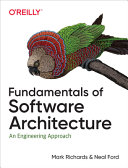
Fundamentals of Software Architecture is the first comprehensive guide to helping developers become architects.
Written by experienced practitioners Mark Richards and Neal Ford, this book covers key topics in software architecture.
From architecture patterns and components to soft skills such as team management and negotiation, this guide will equip you with the knowledge required to excel in software architecture.
Authors: Mark Richards, Neal Ford
Get the bookTopics covered
You will learn how to:
- Develop an understanding of Architectural Characteristics
- Learn about Architectural Patterns and Component Determination
- Become skilled at Diagramming and Presenting Architecture
- Understand Evolutionary Architecture Principles
- Master Software Engineering Practices
- Gain expertise in Operational Approaches to Software Architecture
- Acquire Soft Skills such as Team Management, Meetings, Negotiation, and Presentations.
11. Designing Data-Intensive Applications : The Big Ideas Behind Reliable, Scalable, and Maintainable Systems
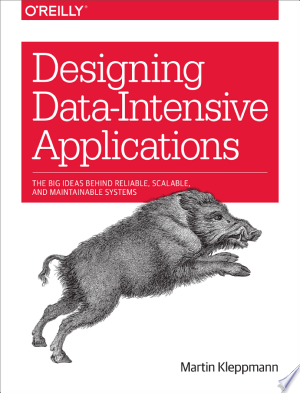
Designing Data-Intensive Applications is a comprehensive guide on choosing the right tools for processing and storing data.
Author Martin Kleppmann helps software engineers and architects make informed decisions when navigating through different technologies.
You will uncover how to assess the strengths and weaknesses of various systems, understand the research underlying databases, identify tradeoffs between scalability, fault tolerance and complexity.
By looking under the hood of major online services’ architectures, you'll get access to key information needed to build effective data-intensive applications.
Authors: Martin Kleppmann
Get the bookTopics covered
You will learn how to:
- Gain an understanding of the principles for processing and storing data
- Evaluate different tools for use in applications
- Become familiar with the pros and cons of various technologies used when dealing with data
- Examine distributed systems research that modern databases are based on
- Understand how to use, operate, and make full use of data in applications
- Study major online services architectures and gain insights from them
12. Release It! : Design and Deploy Production-Ready Software
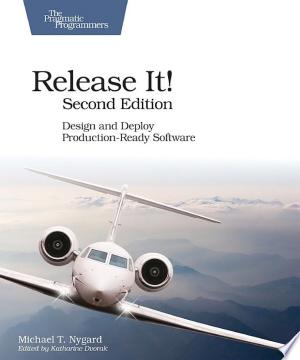
Release It! is the industry-standard book for engineering software systems that are stable, reliable, and secure.
Featuring real-life case studies about costly losses caused by dramatic software failures, this must-have guide provides practical advice to software architecture.
Release It! will show you how to avoid resource drainers such as downtime, zero-downtime upgrades and continuous delivery while making sure your application remains resilient.
Authors: Michael T. Nygard
Get the bookTopics covered
You will learn how to:
- Apply fundamentals of system architecture and design
- Understand the importance of stability antipatterns in large scale systems
- Acquire knowledge on DevOps, microservices, and cloud-native architecture
- Discover strategies to create resilient software that survives real world stressors
- Explore techniques for implementing zero downtime upgrades and continuous delivery
- Analyze case studies about losses due to project failures
- Gain experience from practical advice given by authors who have been through painful experiences
13. Software Architecture Patterns for Serverless Systems : Architecting for innovation with events, autonomous services, and micro frontends
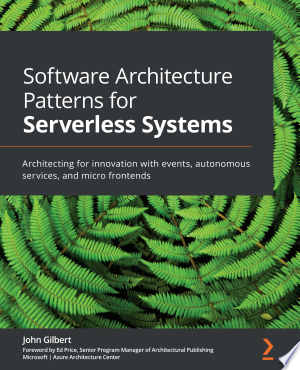
Software Architecture Patterns for Serverless Systems teaches best practices for designing enterprise-grade software systems. A seasoned CTO wrote the book and shows how to operate anti-fragile systems.
The book introduces key architectural elements like events, autonomous services, and micro frontends that enable change. Readers learn how to divide a system into different components for autonomous team work. The book also covers low-level event and data patterns that support the entire architecture.
This book offers invaluable advice on software design, system reliability, maintainability, scalability, security, testability, observability, and performance analysis. By the end of the book, readers will have developed their technical abilities in software architecture design to a professional level.
Authors: John Gilbert, Ed Price
Get the bookTopics covered
You will learn how to:
- Explore architectural patterns to create anti-fragile systems that thrive with change
- Focus on DevOps practices that empower self-sufficient, full-stack teams
- Build enterprise scale serverless systems
- Apply microservices principles to the frontend
- Discover how SOLID principles apply to software and database architecture
- Create event stream processors that power the event sourcing and CQRS pattern
- Deploy a multi regional system, including regional health checks, latency based routing, and replication
- Explore the Strangler Pattern for migrating legacy systems
Josip Miskovic is a software developer at Americaneagle.com. Josip has 10+ years in experience in developing web applications, mobile apps, and games.
Read more posts →- Best Software Architecture Books
- 1. Learning Domain-Driven Design
- 2. Architecture Patterns with Python : Enabling Test-Driven Development, Domain-Driven Design, and Event-Driven Microservices
- 3. Software Architecture: The Hard Parts
- 4. Design It! : From Programmer to Software Architect
- 5. Clean Architecture : A Craftsman's Guide to Software Structure and Design
- 6. Patterns of Enterprise Application Architecture : Pattern Enterpr Applica Arch
- 7. Solutions Architect's Handbook : Kick-start your solutions architect career by learning architecture design principles and strategies
- 8. Building Evolutionary Architectures : Support Constant Change
- 9. Documenting Software Architectures : Views and Beyond
- 10. Fundamentals of Software Architecture : An Engineering Approach
- 11. Designing Data-Intensive Applications : The Big Ideas Behind Reliable, Scalable, and Maintainable Systems
- 12. Release It! : Design and Deploy Production-Ready Software
- 13. Software Architecture Patterns for Serverless Systems : Architecting for innovation with events, autonomous services, and micro frontends

I've used these principles to increase my earnings by 63% in two years. So can you.
Dive into my 7 actionable steps to elevate your career.
Related Posts
- Best Web Development Books
- Best Software Testing Books
- Best Git Books
- Best SQL Books
- Best React Books
- Best GraphQL Books
- Best C# Books
- Best Python Books
- Best Terraform Books
- Best Node.js Books
- Best Rust Books
- Best REST API Books
- Best Unit Testing Books
- Best TypeScript Books
- Best Cryptography Books
- Best Kubernetes Books
- Best Next.js Books
- Best Kotlin Books
- Best Ethical Hacking Books
- Best Cloud Computing Books
